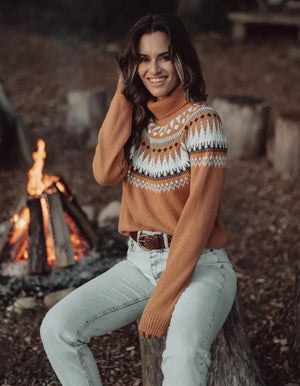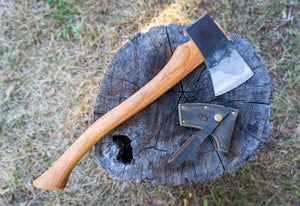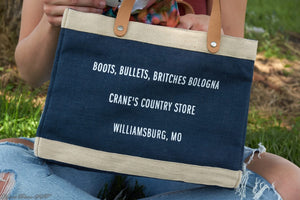
Williamsburg Villager December 2020
Williamsburg Villager December 2020
Ho Ho Ho
By David Crane
Can’t believe how long this year has seemed to be, and how fast it seems to be ending. We are happy that as of now, we are all keeping healthy during this pandemic. Let’s hope we can make it till the vaccine is available. We look forward to being able to gather together with friends and family without worry of getting each other sick.
As Christmas approaches, we are staying busy in the store. As the construction and farming markets go, so go we. It has been a struggle to keep product on our shelves, (don’t get me started on bibs and jeans!), but we have been making do. We have been bringing in new and different products to keep your visits to us an adventure! We hope we can make it easy for you to shop small for all your gift needs.
I look forward to having Trask home, Mason and Amy off school, and maybe time for a nap. I have been lucky to have the staff around me that I do. They truly care about the store and the customers that come in here. I’m sure they don’t look forward to the inventory month of January to come, but it can be relaxing in a way.
Please stay safe and think of others during this time. Wear a mask. Wash your hands. And have a Merry Christmas!
Kind of a Vacation
By: Lance Corporal Ivan G. Roesner, 4th Marine Regiment, 3rd Marine Division
A couple of months ago I seemed to disappear without warning. Part of being in Okinawa, Japan is being a Marine and fulfilling my duties. The Corps decided myself and others in my unit were in need of some training. So we packed up and flew to the Marine Corps Air Ground Combat Center (MCAGCC) in Twenty-Nine Palms, California. It felt good to be back on american soil. I never thought I would miss burgers and normal soda. We didn’t have much time to enjoy those luxuries. Once we got settled in, the training began. It was unrelenting, and very necessary to have success in a worst case scenario. The first three quarters of training were relatively fun to participate in, especially with my comrades. That last quarter of finishing training and packing for home was rough. Everyone in my platoon, and my entire unit was ready to get back to Okinawa. Living in a tin can with thirty other guys for two months, working sunrise to sunset or more, day after day, can put us at each other's throats. The plane ride home, and two weeks of quarantine was plenty of much needed rest for us. We were eager to get back to the grind on Camp Schwab, Okinawa.
The COVID restrictions seemed to lift up a good amount, so I’ll be able to explore the island and get some good experiences to write about.I would love to hear some of the questions from the readers of the Williamsburg Villager. If you have a question about the weather, the people, food, culture, or overall experience of Okinawa, please get in touch with me via email. I will answer questions to the best of my knowledge and as soon as possible!
Email: ivansinsights@gmail.com
Native plants to provide habitat for butterflies and other pollinators
Written by Nadia Navarrete-Tindall-Native Plants Specialist
Winter is a good time to start thinking about creating a native plant garden or enhance the one you have. Thinking about enhancing or creating habitat for pollinating insects is a great place to start. Garden preparation can be done during winter before planting in early spring.

Native plants are very important for butterflies and other pollinators; they provide food and shelter from spring to winter. In addition, dry leaves and wildflowers can provide protection to hibernating insects and food for birds.
Whether you plant natives in pots, in a garden or in a field, butterflies and other pollinators will find them. Pollinators help to guarantee fruit production of crops and most flowering plants, like those in your vegetable garden, as well as serving as sustenance food for baby birds in the spring.
[caption id="attachment_159098" align="aligncenter" width="800"] KONICA MINOLTA DIGITAL CAMERA[/caption]
KONICA MINOLTA DIGITAL CAMERA[/caption]
Butterflies, moths, bees and other pollinators need food all year long. Many native trees that bloom In the spring provide pollen and nectar and these include white and red oaks, wild plum, paw paw, wahoo, red bud, serviceberry, black locust, dogwoods, Kentucky coffee tree, hackberry, sugarberry, sweetgum, wild cherry, white ash, to name a few. Some shrubs that will do the same are spicebush, wild hydrangea, American beautyberry, arrowwood, ninebark and New Jersey tea.
Many spring wildflowers, like Virginia bluebells, wild geranium, columbine, celandine poppy, violets, sweet Williams and Jacob’s ladder, grow naturally in woodlands. These wildflowers would do well in gardens with natural shade.
A sample of this diversity can be seen in various Missouri Conservation Areas including Whetstone Creek CA, near Crane’s Store in Williamsburg, Missouri. This is public land that can be visited almost all year. Prairie Fork CA, also a few miles west of Williamsburg, is dedicated to conservation, education and research, but public use is limited to scheduled events. If you are interested in visiting Prairie Fork CA you can call (573) 254-3990 to schedule your activities.
In these and other CA you can find prairie wildflowers like blazing stars, prairie spiderwort, bergamot, mountain mints, various asters, various species of sunflowers and milkweeds. These plants would do well in gardens under full sun. Many of these plants are adapted to dry and poor soils and once established in a garden, they do not need to be fertilized or irrigated.
To be sure you diversify your planting plan to include wildflowers that bloom at different times of the year. Most are perennial and usually reseed themselves in gardens so you need to plan ahead and think about the species that are right for you. There are many native plant nurseries across the state that can give you advice about what’s best for your site. For a list of nurseries and native plant professionals check the Grow Native website.
Butterflies and pollinators need nectar and/or pollen through the growing season, from early spring to fall. Even a small combination of trees, shrubs and wildflowers will be a good start for your own wildlife refuge.
For more information visit the Facebook page: ‘Native Plants and More’ or send email to Nadia at NativePlantsandMore@gmail.com.


Holly Wreath Cookies
In Memory of Ida Smith
- 40 large marshmallows (1 lb)
- ½ cup butter or margarine
- 3 tsp green food coloring
- 1 tsp vanilla
- 4 cups corn flakes
- Red hots
Melt marshmallows and margarine. Mix in food coloring and vanilla. Stir in cornflakes. Form into wreaths on wax paper and decorate with red hots.

The Williamsburg Villager is provided by Crane's Museum and Shoppes. Please submit any announcements to David Crane at Crane's Country Store located next door to the museum by the 15th of each month to ensure publication.
Annual subscriptions are available for a $12.00 donation to the museum.
Crane's Museum & Shoppes
10665 Old US Hwy 40
Williamsburg, MO 63388
877-254-3356
Crane's Museum is a Regional History Museum located in Williamsburg MO. We invite visitors of all ages to enjoy a step back in time. Enjoy breakfast or lunch in Marlene's Restaurant, shop for gifts at Town House Treasures, or get ready for any season at Crane's country Store's Clearance and Closeout Shop.









